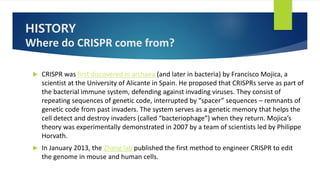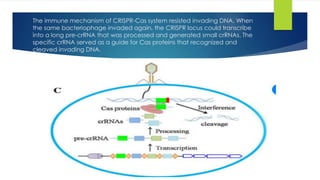CRISPR/Cas9 is a genome editing technique that allows for highly specific modification of DNA. It involves a Cas9 protein guiding a customized RNA to a target location in the genome to cut DNA. Scientists adapted the natural CRISPR immune system found in bacteria for genome editing. CRISPR/Cas9 holds promise for treating genetic diseases and developing crops but also raises ethical concerns when applied to human germline cells due to heritable effects. Researchers continue improving targeting specificity and developing new Cas proteins for additional applications in genome editing and gene regulation.

























